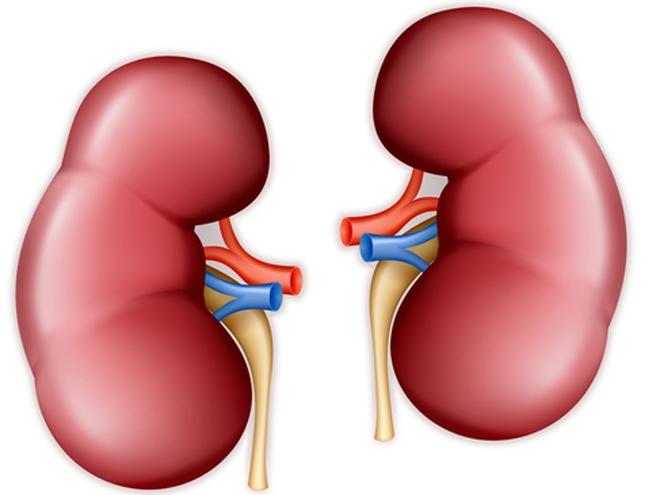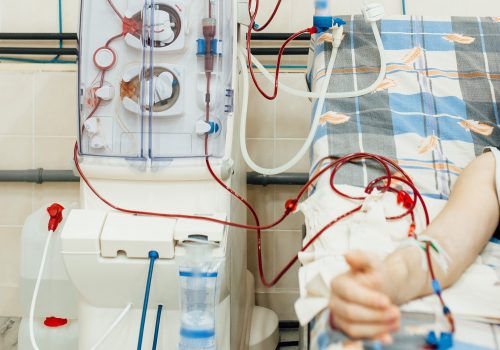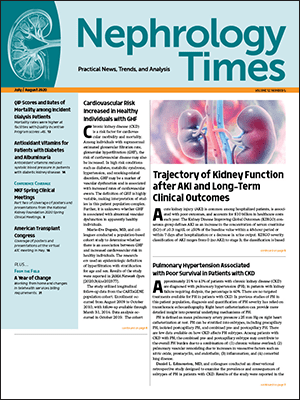
Worldwide, the leading cause of chronic kidney disease is diabetes mellitus. According to data from the National Health and Nutrition Examination Survey (NHANES), the prevalence of kidney disease in patients with diabetes has not changed over time. However, according to Mitra Mosslemi, MSc, and colleagues at the University of California Irvine, Orange, California, the prevalence of the independent defining features of kidney disease has changed.
Albuminuria (albumin creatinine ratio [ACR] ≥30 mg/g) has declined over time, whereas the prevalence of estimated glomerular filtration rate (eGFR) <60 mL/min/1.73 m2 has increased. There are few data available on whether there is an association between the prevalence of those features and glycemic control defined by hemoglobin A1c (HbA1c).
The research team conducted a cross-sectional study to examine the association of glycemic control level with indicators of the clinical manifestation of CKD in a cohort of patients with diagnosed diabetes. Results of the study were reported during a poster session at the National Kidney Foundation 2020 Spring Clinical Meetings in a poster titled Association of Glycemic Control Level with the Clinical Manifestations of Kidney Injury among Patients with Diagnoses Diabetes.
The analysis utilized NHANES data from 1999 through 2016. Diagnosed diabetes cases were defined as those who reported being diagnosed by a physician or using glucose-lowering medications (n=5647). The researchers characterized the proportion of patients with any CKD (ACR ≥30 mg/g or eGFR <60 mL/min/1.73 m2), albuminuria only (ACR ≥30 and eGFR ≥60), reduced eGFR only (ACR <30 and eGFR <60), and both albuminuria and reduced eGFR (ACR ≥30 and eGFR <60) among patients with diagnosed diabetes with good glycemic control (HbA1c <7%), intermediate glycemic control (HbA1c 7% to <9 %), and poor glycemic control (HbA1c ≥9%). The prevalence of patients with hyperfiltration was also examined across glycemic control groups. Univariable and multivariable regression models were used to assess the association between eGFR and ACR with HbA1c.
Across the three groups of glycemic control, the proportion of any CKD among patients with diagnosed diabetes was similar: 51%, 50%, and 54% in the good, intermediate, and poor glycemic control groups, respectively. The proportion of patients with reduced eGFR only was highest in the group with good glycemic control; the proportion of those with albuminuria only was highest in the group with poor glycemic control.
In univariate analysis, there was a significant association between A1c and ACR and eGFR. Following adjustment for age, sex, race, and age at diagnosis of diabetes, the association remained significant only for ACR. Compared with the intermediate and good glycemic control groups, the percentage of hyperfiltration was higher in the poor glycemic control group (8.5% vs 4% and 3.2%, respectively).
In conclusion, the researchers said, “This study demonstrated that among patients with diabetes, better glycemic control is associated with lower albuminuria, but not higher eGFR level. Further studies should examine the risk factors of eGFR decline in patients with diabetes.”
Source: Mosslemi M, Wenziger C, Hsiung J-T, et al. Association of glycemic control level with the clinical manifestation of kidney injury among patients with diagnosed diabetes. Abstract of a poster presented at the National Kidney Foundation 2020 Spring Clinical Meetings (Abstract #311).







 © 2025 Mashup Media, LLC, a Formedics Property. All Rights Reserved.
© 2025 Mashup Media, LLC, a Formedics Property. All Rights Reserved.